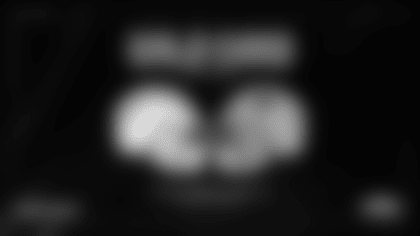HEAD COACH BILL BELICHICK
Press Conference
Friday, September 17, 2021
On the physical battle this week against the Jets:
BB: I think it's part of the game every week. Certainly, the Jets are a team that they are coached to play hard. They play with high effort. They're tough. They play with a good level of physicality. We'll have to match that, and you know, try to exceed it. They really do a good job on the line of scrimmage of running the ball, defending the run, attacking the pocket. We saw coach [Robert] Saleh do that in San Francisco, and that's the way he has trained his team. Same thing with offensive coaches with coach [Mike] LaFleur and coach [John] Benton on the offensive line. They were in San Francisco. We saw them and their style of play. I think everybody knows what that is. They run the ball, other than Ravens, probably as much as any team in the league. Twenty-one personnel and all of that, so I think that'll be a big part of the game.
On how much of a team's physicality is mental and how he tries to coach mental physicality:
BB: That's a tough question. There's a lot of components there. There's a mental part. You have to have a physical toughness, technique, style of play. I mean, there's a big difference between being tough and being physical. They're both admirable and good qualities, but being physical really means to physically be able to dominate, physically, the guy you're playing against whatever position that happens to be. Being tough is being tough. That doesn't necessarily correlate to you being able to overpower an opponent. Some of that has to do with technique. Some of it has to do with style of play, speed, power, explosion, strength, and the ability to transfer all those into force on contact, and on the position, the player is playing style and so forth. There's, I think, different ways you can see that. Different components of it, but something that certainly I think that the Jets try to bring to the game and it's important to us as well.
On the significance of having a fast start to a game:
BB: I think the start of everything's important. It's not the final result, but it's important, and it's a component of it. The first drive is important. The first play of every drive is important. Being ahead in the first quarter doesn't ensure being ahead in the fourth quarter, but that's a good place to start. Again, can a slow start be overcome? Sure, but does a good start give you an edge on three quarters of a game instead of four quarters when you have a lead? Well, you have an advantage, so I think that's something that you want to get on the scoreboard. You want to try to be in second-and-2 instead of second-and-10, or defensively you want them in second-and-9 instead of second-and-3, so the fast start of each down and distance sequence affects how the rest of the sequence is going to go. Those third-down conversions, and everybody talks about how important they are, and they are, but they have a lot to do with what happened on first and second down what your percentages are going to be on third down, just strictly from a number standpoint. You still have to go and execute the play no matter what it is, or defend it whatever side of it you're on, but certainly gaining an advantage on first and second down helps you on third down, so therefore you have a lot of fast starts in the game. Right? I mean, every play is sort of a start of something new. A new series. A new drive. A new set of downs, however, wherever you want to draw those lines of demarcation, doing well on the first one is a good thing. I think all teams try to do that in one way or another, and there's definitely a psychological element of setting the tone and getting the upper hand, gaining confidence, et cetera that comes along with, let's say, early success.
On how he helps players navigate outside criticism:
BB: First of all, you know, I don't really know or care anything about social media. I don't even know what's out there, isn't out there, so that's irrelevant to me, but it doesn't matter. We played football before there was social media, and it didn't matter then either. I think any time you have a team that we can all rely on each other, we're all accountable to each other, and we all support each other, and we all make mistakes. We can make a mistake at the beginning of the game. We can make a mistake at the end of the game. Sometimes that gets magnified because of the timing of it, but there are other things that could have happened at different points of the game that would have had just as big or maybe even a bigger effect on the game. We all need to correct whatever mistakes we've made in the game and try to do better. That goes for all of us. Me, assistant coaches, the players and everybody. That's something we all feel accountable for. I mean, I know there are things in the game that, you know, I maybe could have done a better job of or maybe done differently. I think it would have affected the outcome of the game. I'm sure every player and coach who participated in the game feels like that. I know I felt like that when I called plays, or even when I played. Not that I was a good player, but you know, you still feel accountable for the things you do out there. At the same time, everybody's doing the best they can. Nobody's not doing the right thing on purpose. Sometimes it doesn't work out. Sometimes it does, but, I mean, in the end, you control your preparation, you control your effort, you control your attitude, you control your toughness. Those things are all in your control. You do the best that you can with those. Once you let those go, then I think that's really where the problems start because now you're not doing everything you can to give yourself and your team the best chance. Mistakes. No mistakes. Whatever did or didn't happen. You turn the page. You move on. You prepare. You get ready for the next opportunity. You do that as an individual. You do it as a unit. You do as a team, and I think that's what we all do every week. Win or lose. Good play or bad play. I think the true competitors and the true professionals that I've been around, and I've been fortunate to be around a lot of them, you approach it that way. You control it. You can control what happens, happens. If you learn from it, you learn from it, but then you move ahead to the next opportunity, the next competition, and you do the best you can in that one. Thank you for the question, though. It's good. It's part of competitive sports.
On what the Patriots-Jets rivalry means to him:
BB: I think it's similar to other division rivalries that I've been a part of. You play a team twice a year. You're both chasing the same, you know, goal of the division championship, and then ultimately after that, but what happens after that, it's a rivalry where you know your opponent well. They know you well, and you have a high level of competition and respect for the opponent, but you also go at a high level of competition because they know you so well. You know them well, and you kind of prod and poke and look for areas to attack and exploit based on, let's say, almost an intimate knowledge of your opponent, and they do the same. It's not that all other games aren't competitive, but I think those divisional games are just a little more competitive because of the familiarity of the teams and the franchises that we have. Let's say particularly with the Jets or the Dolphins last week. There's also some transfer of personnel, players and coaches, from one team to another fairly recently that, you know, add another level of knowledge and information about the opponent from kind of what it looks like from the other side of the fence that you don't always get to see that can highlight some of that level of competition as well. I mean, I was in Baltimore. I was in Detroit. 12 years with the Giants. Denver. Those rivalries within those divisions are very similar to the rivalries with the three teams we have in our division. They're just a little tighter. A little more personal. A little more frequent. It's a little higher energy and preparation level just because of, again, the reasons that I just mentioned.
On the difficulty of long snapping and the idea of replacing the long snapper position by training other roster players to handle those duties to preserve roster flexibility:
BB: It's an interesting conversation. One that's really, I would say, honestly during the course of my coaching career, has kind of traveled that long and winding road from when I came into the league. First of all, there were no long snappers, but the specialists, the kickers and the punters were frequently position players, and that's where they came from in college as well, so a lot of the good college punters and place kickers also played a position, and then as time evolved, starting with like [Pete] Gogolak and guys like that, you know, they specialized in kicking, and then you had some of the punters that specialized in punting, so players like Danny White and Tom Tupa and guys like that who were very good position players, you know, Gino Cappelletti, that evolved into specialists because of, I would say, the importance of the kicking game the number of plays that the kicking game and opportunities that it provided. Same thing with returners. There were very few just pure returners. I think long snapping, to me, changed in the mid-80s, and really the key guy in that was [Steve] DeOssie, in my opinion because Steve was the first center that really, truly allowed a spread punt formation against all-out rush. Prior to that, teams would generally pull. First of all, there wasn't that many gunners, but when teams started using gunners, they would pull one in and kick away from the free guy on the back side, and that was kind of the idea that protection was not to let the snapper block against a nine-man rush with a split player. The return team would have one guy on the gun or the split, and one guy returns, so you got nine guys rushing against essentially the punter who wasn't a blocker or the split guy who wasn't a blocker and the snapper who really wasn't a blocker, so it was nine on eight, and the idea was to block the most dangerous eight and let the ninth guy go and punt away from him, and then when the Cowboys went to spread punt and then the Cardinals followed that pretty quickly, and they kept two gunners split, and the snapper blocked a guy, then that created an eight on eight situation but put a lot of pressure on the snapper to deliver the ball 15 yards deep on the money and still block a good rusher offsetting and the A-gap. I mean, we've all seen offensive linemen have trouble making that block on a pass play, and so now you're talking about a deep snap and a block, but as players got better at that, that skill became more, I would say, players became more efficient at that, then teams decided to carry a long snapper rather than worry about getting a punt block. Plus, there was also a level of consistency and durability with those players, so if you lose a position player who is also a long snapper, you're looking at some real problems, and that evolved into the punters, for the most part, becoming holders because of the amount of time that they could spend with the kickers versus having a wide receiver or quarterback be the holder, which again, you don't see very much of that anymore. Assuming a punter is, you know, capable and good enough and has good enough hands to be the holder, and so then that kind of whole unit has really evolved into, you know, specified snapper or a specified kicker, a specific punter, and generally the punter as the holder, so the three of those guys could work together all practice because they're all available. I know, again, going back to when I first came into league, you worked on field goals, and, I mean, it was maybe five minutes because that was only time the starting center and the starting receiver or backup quarterback or whatever were available to practice that, so, like, is it that hard? It's a pretty hard job. Yeah. It's a pretty hard job. It's not as hard as it used to be because you're not allowed to hit the center, especially on field goals and run them over. There are some limitations on the punt rush based on what the formation is and so forth, but generally speaking, it's a hard block, and I think you see most punt rushes attack the snapper. They loop guys back so the center thinks he's going right, but then he has to come back to the left, or maybe they fake like they're coming back, but they don't come back, so he not only has to snap, and so then that gets into whether you're a blind snapper and you look at the rush and just snap the ball, or whether you're a look back snapper and snap it, and then after the snap you have to look up and recognize what's happened and make a proper block, but again, it's man-to-man blocking. Like that guy's got to block somebody or you're a guy short, so it is a hard job, and the accuracy of the place kickers through the years, which has gone up dramatically. Part of that's the surface. Part of that's the not kicking outdoors and so forth. Part of it is the operation between the snapper, the holder and the kicker, which I would say, generally speaking, is at a pretty high level, which it should be in the National Football League. I think if you go back and look at kicks from back when that wasn't the case, you see balls rolling back and the holder coming out of a stance that catch the ball and the kind of things you see at times in a high school game and that kind of thing. There's just a much higher level of skill, which there should be, but yeah. I think it's a pretty tough position, and nobody knows or cares who the snapper is if there was a bad snap and all of a sudden, that's front-page story. There's a decent amount of pressure on that player as well, and not just the snap, but also, as I said, to the block and punt protection. The roster sizes have increased. It's been a lot easier to carry that player just like it's a lot easier to carry a true returner, and so in terms of depth and availability, you know, you really don't want to be looking for one of those players in the middle of any time. In the middle of the game or middle of the season, but when you have him as a starting receiver, Lou Groza, a starting tackle, or whoever. Those guys and they're playing and something happens and not only do you lose a player, but you lose a key specialist as well, so yeah. I mean, it's a great question. There would be so much value in a player that could do a couple of things and save a roster spot, but I would say there are so few of those players available, even at the point where, you know, [Matt] Amendola did a great job last week. It's so rare that you even see a combination punter and place kicker. Usually it's one or the other, and I think part of that is at one level it's, I'll say, relatively easy to put your foot on the ball, but at this level, you know, the difference in kicking mechanics and punting mechanics are so different that it's really hard to be good at both, but you know, if a guy's got a good leg and he's a good athlete and he can make good contact with a ball, there's a point where, high school, college, that maybe it's good enough. Maybe he's the best guy on the team to do that, but I'd say at this level, that will be asking a lot. Now like Jake [Bailey] can punt. Jake can kick off. Jake can kick field goals. To be at the kind of level you want it to be at, to have the person split their time between the two of those, again, I think is a lot to ask. I'm not saying it's impossible or unheard of, but it's a lot to ask, and that's why you don't see it very much. That's a good question. It's really interesting, and I'd say if you look at the evolution of those positions since I've been in the league, but even a little bit before then, because that's really where it started to go was in the late sixties. I think [Pete] Gogolak was the first, or one of the first, where that trend really started to, okay, we're just going to keep a guy, and all he does is kick. [Garo] Yepremian and guys like that. That's all they did. That was a little bit unusual, but you know, gradually that has become the new normal.
On the characteristics of the cornerbacks in Robert Saleh's defenses over the years and how the Jets' cornerbacks fit into that mold:
BB: Well, you know, I think that's honestly probably a better question for coach Saleh because that's not really a style of defense that we play, and you know, exactly what the criteria is that they're looking for. I'm not sure that I'm qualified to speak precisely on that, but I would just say in the Jets case, the foundation of the base of the defense is clearly the, let's call it the Seattle three-type system that Pete [Carroll] had that coach Saleh worked under and so forth, but they've changed some of those. Like they don't do everything that Seattle does. They have different packages and different coverages. Some of the things that Seattle did under the, let's call it the original kind of Pete [Carroll] Seattle three-type defense, you know, whether it's the Jets or other teams that have come from that general, basic tree, have branched off and either modified them based on their own philosophy, or maybe it's a combination of personnel, or also just the way that the game has evolved in the last decade. Maybe they feel more comfortable doing certain things that either those defenses didn't have, or they've modified the adjustments in a way that's easier or fits them better. Again, in the Jets' case, I think that's the foundation. If you look at their defense and look at the Seattle defenses in the early 2000's, 12, 13, 14, 15, that Pete [Carroll] ran there, there's quite a few differences besides personnel. Forget about that. There are quite a few differences there. I'm not saying one's better than the other. I mean, certainly San Francisco had a lot of success last year and the four years that coach Saleh was there, but Pete's [Carroll] had a lot of success doing it his way, and Dan Quinn, Gus Bradley and all the other guys that had come from that system. They all kind of have their little, it's no different than the west coast offense, in my opinion, where you have a certain west coast offensive system with coach [Paul] Brown going back to Cincinnati or coach [Bill] Walsh in San Francisco, and then that's evolved into, where coach [Mike] Holmgren, coach [Jon] Gruden, go right down the line, coach [Mike] McCarthy and all the people that have come in through that system, like that may be the foundation or basis for it, but there's a lot of things that have been added to it, particularly the running game, that varies quite a bit from team to team, even though the passing game maybe have roots in that. Again, going back to [Bill] Walsh and [Paul] Brown and those coaches, the running game was just as much part of the west coast offense as the passing game. Now, I would say that's been much more modified or individualized by team. Sorry. It's a long answer that still doesn't answer the question. A lot of long and fast corners back in Pete's [Carroll] system. I think everybody in the league likes long, fast, competitive corners. I think those guys could probably, you know, Richard Sherman and those guys could have played in any system, but, you know, they were in that system, and think there's examples of guys that fit that description, but also guys that didn't fit that description, [Desmond] Trufant in Atlanta for coach [Dan] Quinn, as an example, like that were good players that had different styles of play, so yeah. I'm not, again, I'm not really sure that it just has to be one way or certainly not like that anymore.






































